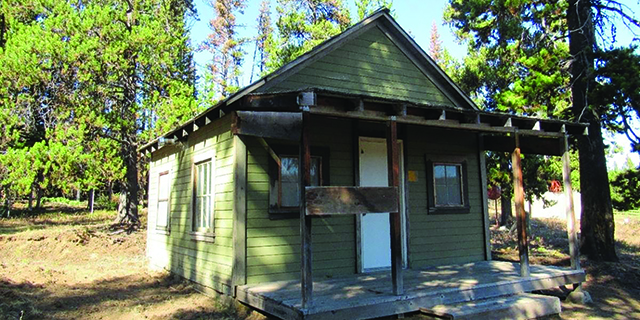Water rights reform appears inevitable
Published 1:36 pm Tuesday, April 7, 2015
Enormous splotches of cancer-like drought consuming some of a nation’s most productive agricultural lands: If CIA analysts saw the same thing happening in Africa, Asia or Latin America, they would warn of near-term economic and social upheaval. It’s happening here in America and though nobody is predicting food riots right away, a substantial governmental and personal response is essential.
The U.S. Drought Monitor (droughtmonitor.unl.edu) has been a source of worry for several years but is particularly worrisome this spring. With the exception of Montana and Wyoming, the mainland Western states are on track to repeat the dry pattern of recent years. Now in early spring when conditions might usually be expected to be moist, 60 percent of the West has some degree of water shortage — 7.23 percent in the worst, exceptional form of dead dryness. Years of this means that stored water and groundwater are being rapidly depleted. By its definition, NASA warned last month that California is working its way through its last year of water.
Trending
Crucial food-growing areas of California and Midwestern states like Kansas are in the grip of conditions that will drive up food prices, putting greater strain on families that already struggle to balance monthly expenses. Affordable food has been one of America’s key advantages. The California Farm Water Coalition points out U.S. consumers pay just 6.2 percent of their disposable income on food, compared to 10.2 percent in 28 other high-income countries. At the same 10.2 percent rate, U.S. families would have to increase the amount they spend on their food budget by almost $4,000 per year, the coalition’s Mike Wade commented to The Wall Street Journal.
Allocating water in a time of scarcity will stretch the current boundaries of legal ingenuity. Water law is a topic highly peculiar to the U.S. West, a field that has sparked epic lawsuits and actual shootouts. We’re fast coming to a time when this untouchable topic will have to be dealt with. As an Oregon State University Extension crop scientist told The Oregonian last week, “At what point does it go from being a dry spell to just having to accept where we are today and where we’re going?”
This crisis is generating a lot of discussion. In Southern Oregon, water users are awaiting congressional authorization of a set of agreements that will help settle water-sharing issues between farms, tribes and wildlife. In California, a venture capitalist and a journalist have proposed a new free market to buy and sell water like any other commodity, rather than narrowly linking specific water to specific land as the law now mandates. Other responses include a Facebook campaign seeking to make vegetable gardening a standard offering in public schools.
Western water was initially parceled out based on whomever first began using it for certain recognized beneficial purposes — usually by 19th century farmers and ranchers, and then eventually by growing cities. Byzantine court decisions and rural politics driven by property-rights philosophies make it astoundingly difficult to effect changes in this system.
The pressure for reform is only going to increase, however. Like requisitioning iron in a time of war, a time is fast approaching when we will be forced to develop ways to get water where it will do the most good. Having these debates now, before too much ag land is in deeper crisis, will be the best way to avoid more damaging impacts later on private water rights.









